
The siege, evacuation
and destruction of a Minneapolis police station
The siege, evacuation and destruction of a Minneapolis police station
Three days of rage culminated in the burning of the Third Precinct, an event unprecedented in modern American history.
On May 28, 2020, the world witnessed a Minneapolis police station in flames.. It was the third night of unrest after the killing of George Floyd during an arrest by four officers based at the Third Precinct.
Records recently released by the city of Minneapolis document the decisions within City Hall and the Capitol that led to Mayor Jacob Frey’s order to abandon the building. The mayor said protecting the building wasn’t worth sacrificing another life. But Frey and Gov. Tim Walz have traded accusations over why a mission to deploy the National Guard was delayed until after the Third Precinct was lost..
The Third Precinct had opened at 3000 Minnehaha Avenue in 1985 with a promise to be a community asset. But for those on the streets those three nights in May, the station had become a symbol of police power, its destruction a triumph over the abuse of that power.
For others, its loss to looters and arsonists reflected a city out of control, a failure of leadership and a step toward anarchy.
This is a timeline of the fall of the Third Precinct, as documented by Star Tribune journalists, public records and other sources.
George Floyd loses consciousness after being restrained on the pavement by Minneapolis police officers. He's pronounced dead an hour later.
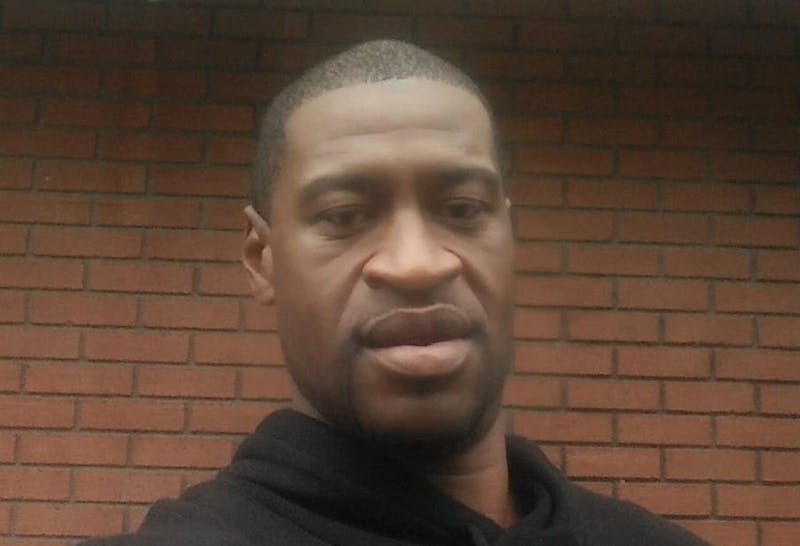
George Floyd. Photo from Facebook.
Protesters against police brutality and racism march from Cup Foods, where Floyd was killed, to the Third Precinct, which is about two miles away.
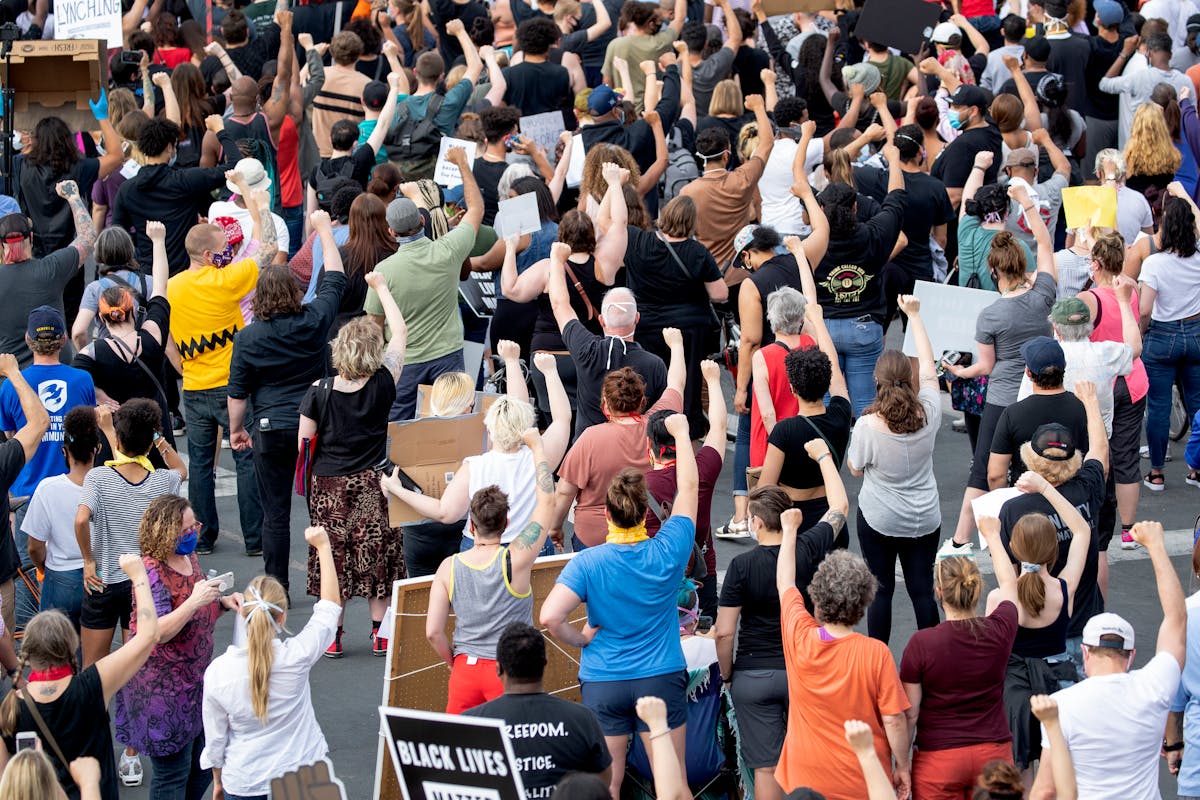
Protesters gather at Chicago Avenue and E. 38th Street in south Minneapolis after the death of George Floyd. Photo by Carlos Gonzalez.
Police standing on the roof of the Third Precinct fire tear gas and less-lethal projectiles after protesters break windows on the building and vandalize squad cars. Chief Medaria Arradondo says he gave the order to use tear gas because the vehicles broken into by rioters had police weapons inside.
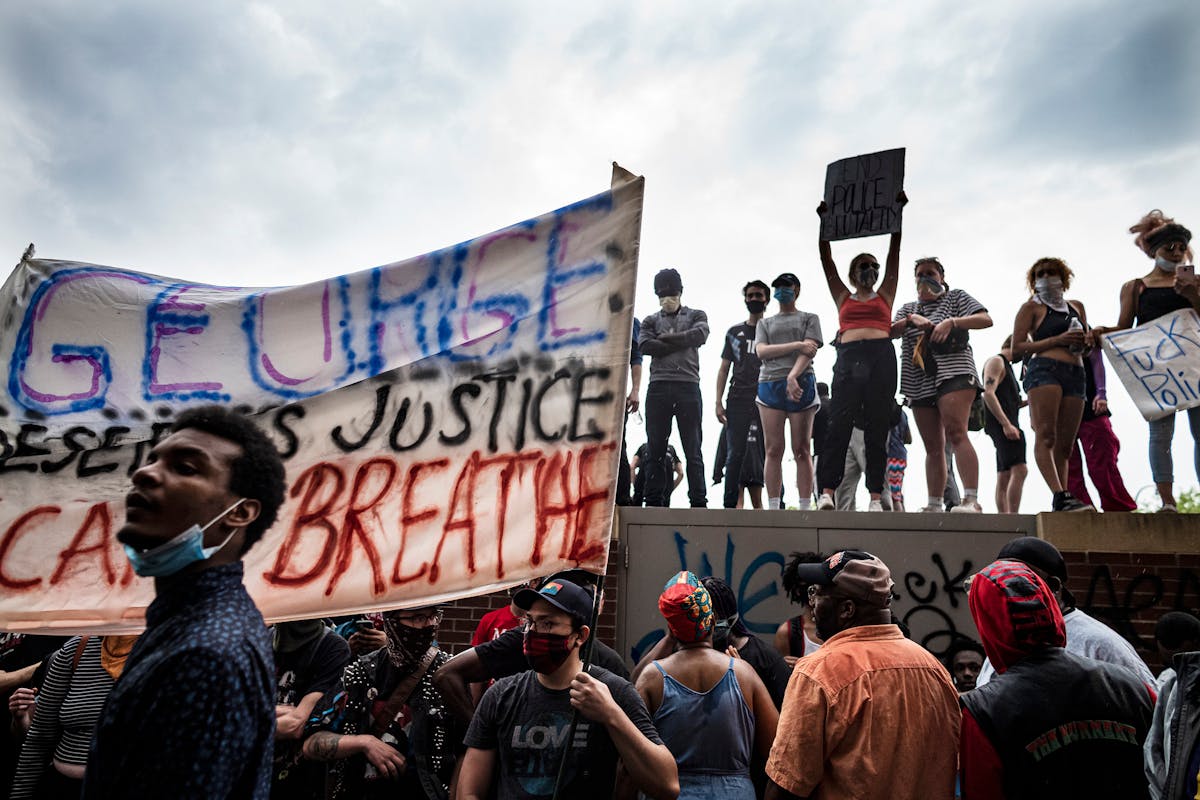
Protesters stand outside the Third Precinct on Tuesday night. Photo by Richard Tsong-Taatarii.
State Patrol arrives in Minneapolis prepared to handle any protests on freeways.
A chaotic scene ensues outside the Third Precinct as protesters are hit with tear gas.
Video by Andy Mannix.
Minneapolis City Council Member Jeremiah Ellison condemns the police response he witnessed outside the Third Precinct the night before, calling it "completely out of control."
At a news conference, Gov. Tim Walz promises a thorough investigation of Floyd's death, and thanks the protesters. "It's how people express their pain, process tragedy and work to create change." He adds that he is "saddened" that some of them were in harm's way the prior night and encourages everyone to be safe.
The looting of the nearby Target store prompts Arradondo to call Mayor Jacob Frey to request assistance from the National Guard.

Looters enter the Target store on Lake Street and steal merchandise on the second day of protests. Photo by Richard Tsong-Taatarii.
Frey calls Walz and requests assistance from the Minnesota National Guard. Frey said Walz "did not say yes. He said he would consider it.” Frey insists that he explicitly asked that night whether his verbal requests constituted a formal request for the National Guard, and the governor’s staff confirmed that they did. The governor’s office disputes that. "I don’t think the mayor knew what he was asking for," Walz has since said. "He wanted the National Guard, and what does that mean?" The governor said they needed more details to assign guard members to the right tasks and locations. Still, he said he gave the guard a "warning order," alerting them that they should get ready to move.
Minnesota Commissioner of Public Safety John Harrington first contacts Minnesota National Guard Maj. Gen. Jon Jensen by phone about a possible mission for the National Guard to respond to the unrest.

Protesters continue to gather at the Third Precinct. Photo by Carlos Gonzalez.
Minneapolis Police Commander Scott Gerlicher, who heads the Special Operations & Intelligence Division, is inside the department's command post when Deputy Police Chief Henry Halvorson asks him to prepare a written document outlining what assistance they might need from the National Guard.
Gerlicher sends Halvorson and Arradondo a one-page document saying the city is asking the Minnesota National Guard to send 600 soldiers, plus vehicles, for "immediate assistance with significant civil unrest occurring in the City of Minneapolis." It notes that they have "expended all available resources within our Department as well as all available law enforcement assistance from our neighboring jurisdictions." The document lists four items as a "mission plan" and describes how the police department and National Guard would coordinate.

Arradondo forwards the request to Harrington. "I didn’t hear any more about the National Guard from anyone that particular night," Gerlicher said in an interview. "We were obviously in the thralls of trying to control the riots, but I didn’t hear any more."

Minneapolis police use riot control weapons for the second night on protesters.

Protesters erect barricades outside the Third Precinct. Photo by Aaron Lavinsky.
Public officials plead for calm as the situation on East Lake Street becomes increasingly volatile. Arsonists set fire to numerous buildings surrounding the Third Precinct.
AutoZone burns after being set on fire by rioters. Video by Mark Vancleave.
Some council members blame the police for inflaming the crowd.
Frey says that the city is receiving assistance from the State Patrol and announces that he has requested the National Guard.
Arradondo resends the National Guard request document to Harrington.

Jensen wakes up to a text from Harrington saying they need to accelerate the plan to send in the National Guard.
Police stand outside the Third Precinct on Thursday morning. Around the station, buildings smolder and fires are put out from the unrest the night before. Video by Brian Peterson.
More than 16 hours after his verbal request, Frey sends Walz a written request for the Minnesota National Guard to immediately assist the city. "The ongoing situation is well-beyond the capability of our police and fire departments to respond," Frey writes.

Minneapolis police officer Rich Walker arrives at a police union board meeting. The other board members tell him to go empty his locker at the Third Precinct because the city is giving it up to protesters. He said he laughed in disbelief. “If you give up a precinct, you’ll give up anything," Walker said.

Officer Rich Walker testifies in July before the Senate Judiciary and Public Safety and Transportation committees. Photo by Glen Stubbe. Photo by Glen Stubbe.
Frey, Arradondo, and City Council Vice President Andrea Jenkins urge peace amid the turmoil. Frey announces that he has authorized a "unified command structure" that allows Arradondo to work with other jurisdictions. Frey says the goal is protecting infrastructure that residents need to get through the pandemic, such as pharmacies, banks and grocery stores.
Walker arrives at the Third Precinct and sees officers taking pictures off the walls, unplugging computers and taking memorabilia.
Arradondo forwards Harrington a document, sent to him by Gerlicher, that provides updates on the number of injuries and fires related to the unrest. It also lists 12 types of sites as "critical infrastructure" that need to be protected.

Retired MPD Third Precinct officer Ron Reier gets a text saying: “I was just called by one of my sergeant friends who is currently at the Third precinct. The city administrators have ordered the cops to abandon the precinct and they are all clearing equipment out now from the building and will vacate at 14:00 today giving it up to the protestors.” Reier said he texted back: “You are kidding, correct?”
Leaders of the Minneapolis Police Department hold a conference call with Harrington to discuss help they need from the State Patrol and Minnesota National Guard. Gerlicher said Harrington asked them to follow up with an e-mail.
Walz activates the Minnesota National Guard. He announces it publicly 90 minutes later. Getting the National Guard to move in large numbers is not easy, Walz said, because many of the soldiers are coming from other jobs as cooks, mechanics or nurses. When they planned for the Republican National Convention, they had 18 months and millions of dollars. When the unrest began, "We had 12 hours and no money to try and put that same force there."

A Minneapolis emergency management official reports that MPD is moving "critical operations" out of the Third Precinct but also bolstering its defenses.

The Minnesota National Guard receives an e-mail from Harrington outlining three missions: to support the Minneapolis Fire Department, St. Paul critical infrastructure and the Capitol Complex quick reaction force.
Harrington sends Arradondo an e-mail with an attachment titled "DPS_Mission_Statement.docx." It provides some detail about which state troopers and National Guard members might be available but leaves other details unspecified, such as the name of the National Guard commander supporting the local response.

Gerlicher sends an e-mail to Harrington and others outlining their needs for the next 48 hours: safety support for Minneapolis firefighters; looting prevention teams along Lake Street and other major commercial corridors; and help with traffic control. "The National Guard is really a support entity, so they requested and needed police with them to do their security detail," Gerlicher said in an interview. "They didn't want the National Guard dealing directly with possible violent protesters, so we had to scramble, and we were able to secure some St. Paul police officers that had been helping us out to accompany the National Guard with those fire security teams."

Kathy Waite, the deputy police chief, texts Frey's chief of staff, Gia Vitali, to say that many officers have already been pulled out of the Third Precinct.
Harrington sends an email to Arradondo indicating the state is still trying to figure out what the city is doing, and what it needs.

Frey goes on Rachel Maddow's show on MSNBC to ask for an end to looting and unrest.
Protests grow, and windows and doors are broken at the Third Precinct.

A protester climbs over a fence to the Third Precinct during a third night of protests. Photo by David Joles.
A Snapchat account for d2goat ("believed to be an account used by [Dylan Shakespeare] Robinson") shows a live video that "captures at least one individual appearing to make a Molotov cocktail," according to a criminal complaint. Robinson has been accused of aiding and abetting arson at the Third Precinct.
Arradondo calls Frey, who gives the order to evacuate the Third Precinct.

A Minneapolis police officer fires a less-lethal round from atop the Third Precinct during a third night of unrest. Photo by David Joles.
Frey calls Walz and informs him about the evacuation. Walz did not disagree with the strategy at any point, Frey said.

Protesters scatter as a concussion grenade goes off outside of the Third Precinct. Photo by David Joles.
Minnesota Bureau of Criminal Apprehension Investigator Matthew Lund electronically signs a search warrant application seeking access to "any and all uniform and equipment lockers" belonging to former officers Derek Chauvin, Tou Thao, Thomas Lane and J Alexander Kueng. "These lockers are owned by the Minneapolis Police Department and are located within the Minneapolis Police 3rd Precinct." The application seeks "a search warrant to open these lockers and examine the contents." The request seeks access "to enter and search between the hours of 7 a.m. and 8 p.m."

District Court Judge Kathleen Sheehy electronically signs the search warrant. It's never executed, but a spokesman for the state Department of Public Safety says the items were ultimately retrieved.

The Minnesota National Guard has 90 soldiers in the Twin Cities to help with its missions of assisting Minneapolis firefighters, St. Paul infrastructure and the Capitol Complex. Eighty State Troopers are sent to Nicollet Mall. None have been sent to the Third Precinct.
A surveillance camera at the Third Precinct shows a man carrying a Molotov cocktail into the Third Precinct. Police later identify him as Bryce Williams, who will face multiple charges. In an Instagram interview, Williams described watching the Third Precinct burn: “For once we feel like we’re in complete control. The police can’t do anything. We’re burning down their sanctuary, their home.”
The Third Precinct is set on fire.
Protesters stand outside the Third Precinct on Tuesday night. Photo by Carlos Gonzalez.
A video is posted to Twitter showing police leaving the precinct.
MPD spokesman John Elder releases a statement: “In the interest of the safety of our personnel, the Minneapolis Police Department evacuated the 3rd Precinct of its staff. Protesters forcibly entered the building and have ignited several fires.”
Walz holds a virtual meeting with Harrington, Jensen and State Patrol Col. Matt Langer. Walz decides the state will take over the riot response and discusses a plan to gather every available law enforcement officer.
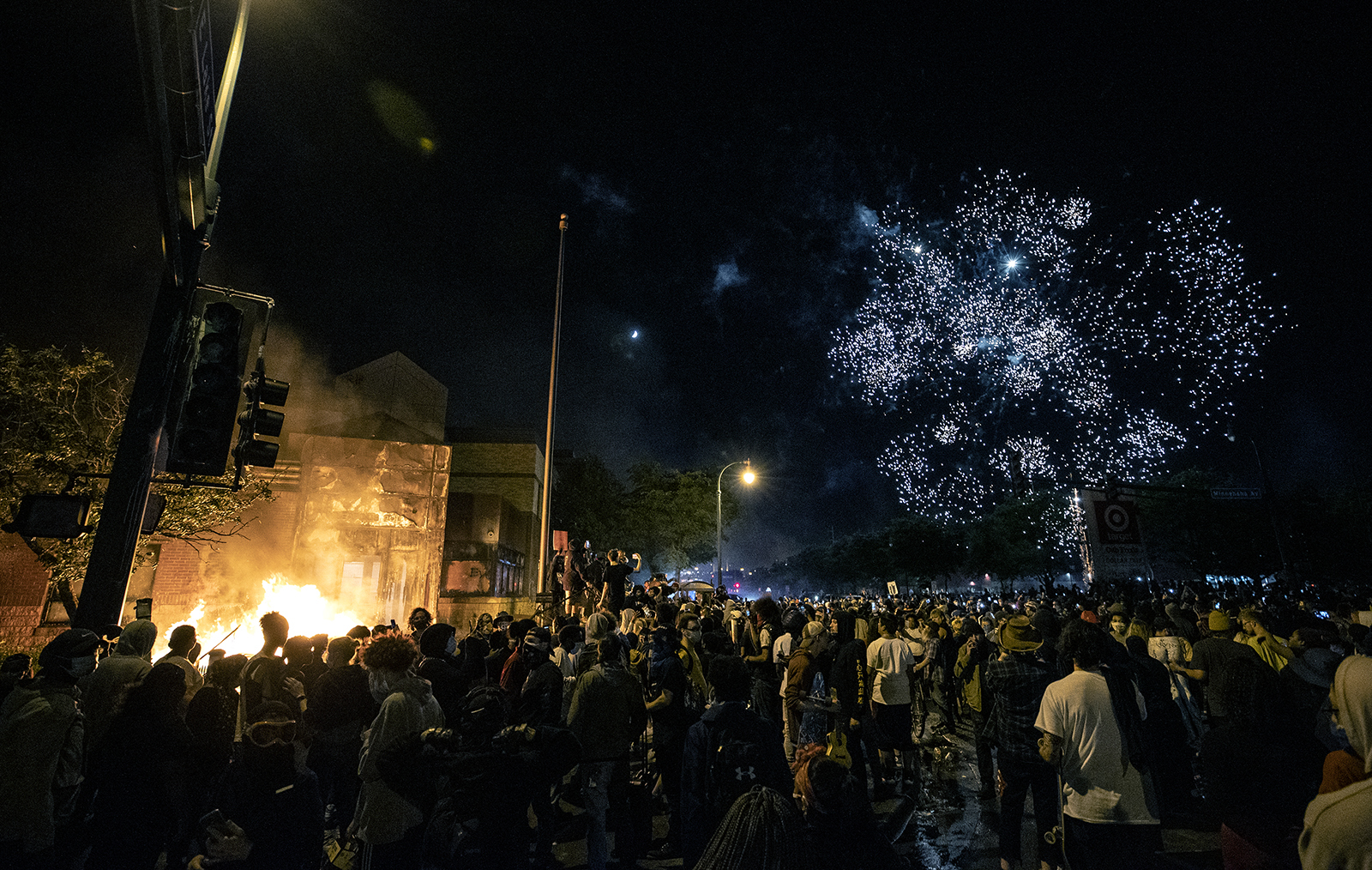
The Third Precinct is abandoned by police and burned by protesters. Photo by Carlos Gonzalez.
The city of Minneapolis tweets that a gas line may have been cut near the Third Precinct and warns that the building could explode.
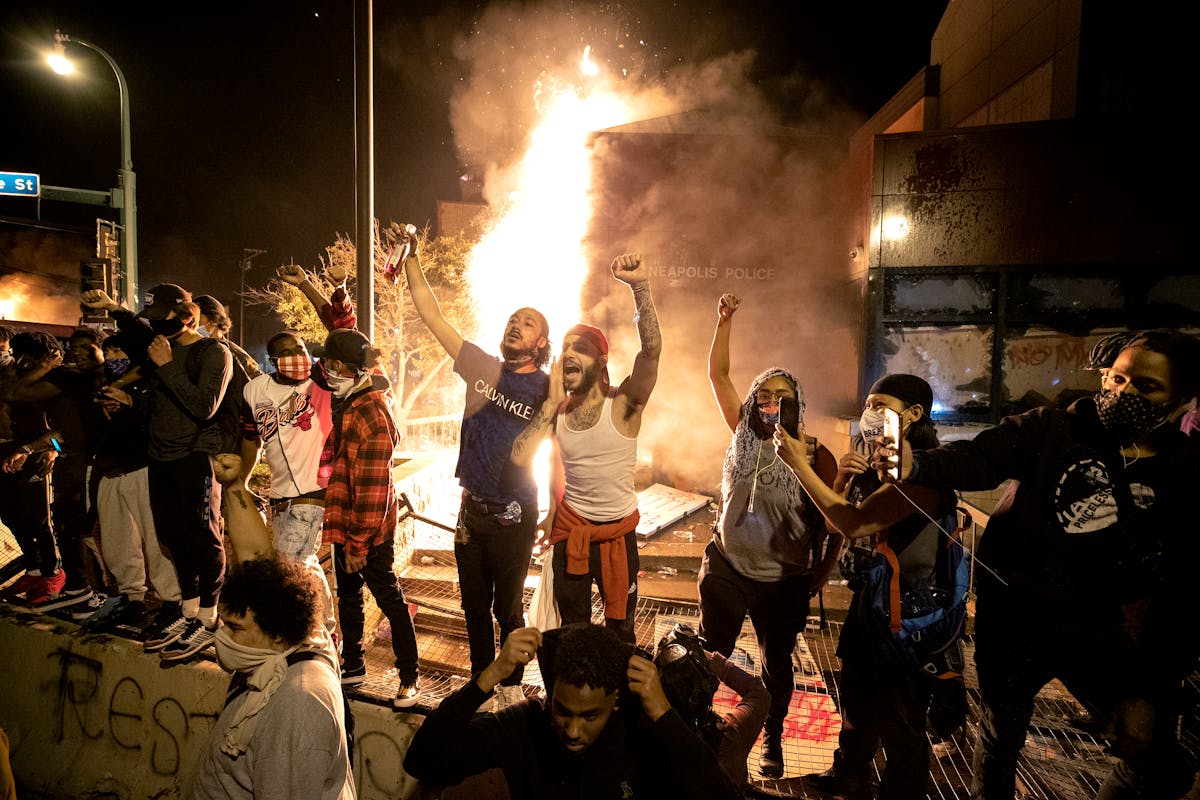
Protesters outside the Third Precinct as it burns. Photo by Carlos Gonzalez.
President Donald Trump decries "a total lack of leadership" and says Frey must restore order in the city "or I will send in the National Guard & get the job done right." He also tweets that he spoke to Walz.
Walz gives the order to have law enforcement clear the Lake Street area and reclaim the Third Precinct. Langer, Harrington and Jensen recruit law enforcement officials from the Department of Natural Resources, Metro Transit, University of Minnesota police and several other agencies to help.
The Third Precinct and buildings in the surrounding area burn on Thursday night. Video by Carlos Gonzalez.
Queen Jacobs, 26, arrives at the Third Precinct. She stands with others watching the flames and sharing their stories.
“I think we all felt a sense of strength and community, and a piece of what our ancestors went through, and when they were able to be liberated,” she said. “We’re done backing down. We’re done rolling over. We’re done dying.”
Protesters outside the burning Third Precinct. Video by Mark Vancleave.
Trish Glover, the city 311 department's director, e-mails a Minneapolis council member to say what's happening in the Third Precinct building, which also houses the 311 service. The switch or server they had been using to operate remotely during the pandemic "is being destroyed as we speak."

Frey holds a news conference to say he made the decision to evacuate the precinct to avoid hand-to-hand combat that could have resulted in injuries and deaths. “Earlier this evening, after receiving real-time information from Arradondo and after having numerous phone calls with him involving the situation at the Third Precinct, it became clear that there were imminent threats to both officers and the public,” he said. “I made the decision to evacuate the Third Precinct. The symbolism of a building cannot outweigh the importance of life, of our officers or the public.”
Harrington mobilizes state-run forces.
National Guard troops arrive in area of the Third Precinct.
Arradondo issues a statement to the "MPD family" about the decision to evacuate the Third Precinct: "Please know that the MPD is not defined by brick and mortar or the uniform we wear but rather our character, soul and love of service. We WILL move forward. During these unprecedented times those we serve need us to be that beacon of light to guide them towards a hopeful tomorrow."

A Minneapolis Fire Department task force arrives at the Third Precinct, where flames are shooting from the roof.

Walz has a private phone call with Frey, St. Paul Mayor Melvin Carter and the police chiefs from both cities. Frey said Walz gave them no indication that he was about to publicly rebuke Minneapolis' response to the riots.
The last Minneapolis fire unit leaves the Third Precinct after extinguishing the roof fire and other spot fires.

Amid criticism after one of the most destructive nights in Minneapolis history, Walz calls the city’s response to the riots an “abject failure.”
Gerlicher sends Harrington, Arradondo and other MPD officials a draft plan of what they think the city will need to restore safety. "Note that this will require significant additional law enforcement and National Guard resources beyond what is currently in place and assumes full utilization of all available MPD resources." The plan asks for 1,700 National Guard soldiers to help guard the city's business corridors and support local firefighters.

The state opens a Multi-Agency Command Center (MACC) to respond to the unrest. A larger group of state and city officials — Gerlicher estimated more than 100 — are now working out of the same location, rather than communicating via phone or email.
Gerlicher sends Harrington, Arradondo and others an updated plan outlining "listed priorities" for the National Guard teams that will focus on preventing looting along the city's business corridors throughout the weekend. It lists Lake Street as the top priority.
Jensen says he receives a list of prioritized missions in Minneapolis and St. Paul.
Walz announces the first night of a curfew in Minneapolis and St. Paul.

Walz announces he's signed an executive order authorizing his public safety commissioner to coordinate police and fire departments in Minnesota to help in the Twin Cities.

Police move in for a massive show of force to enforce the second night of curfew, dispersing thousands who had gathered near the Minneapolis police Fifth Precinct and potentially preventing a repeat of what happened to the Third.

Protesters outside at the Fifth Precinct raise their hands as police from the roof looked into the crowd on Friday. Photo by Renee Jones Schneider.
Alondra Cano, the City Council's public safety chair, says she's opposed to rebuilding the Third Precinct on that site.
The city estimates it will cost $10 million to restore the Third Precinct.
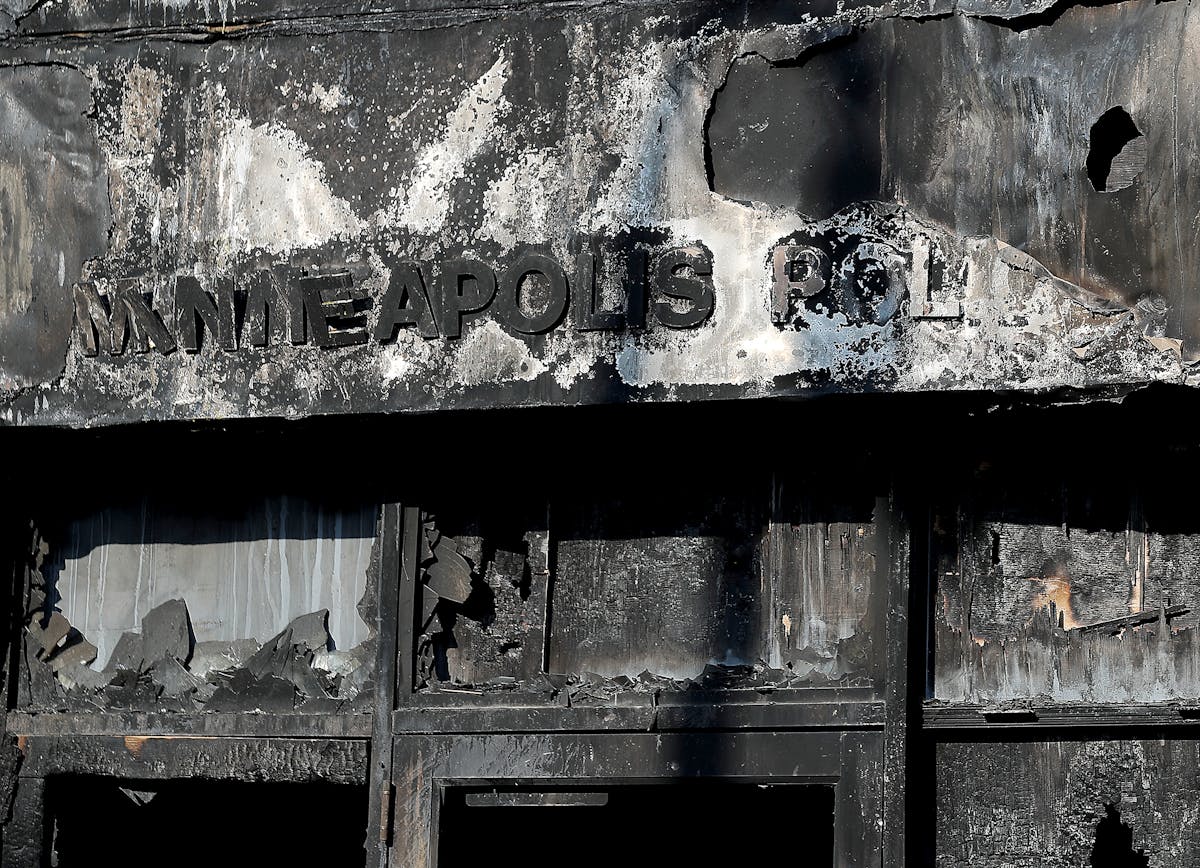
The fire-scarred entrance, shown on May 30. Photo by David Joles.




